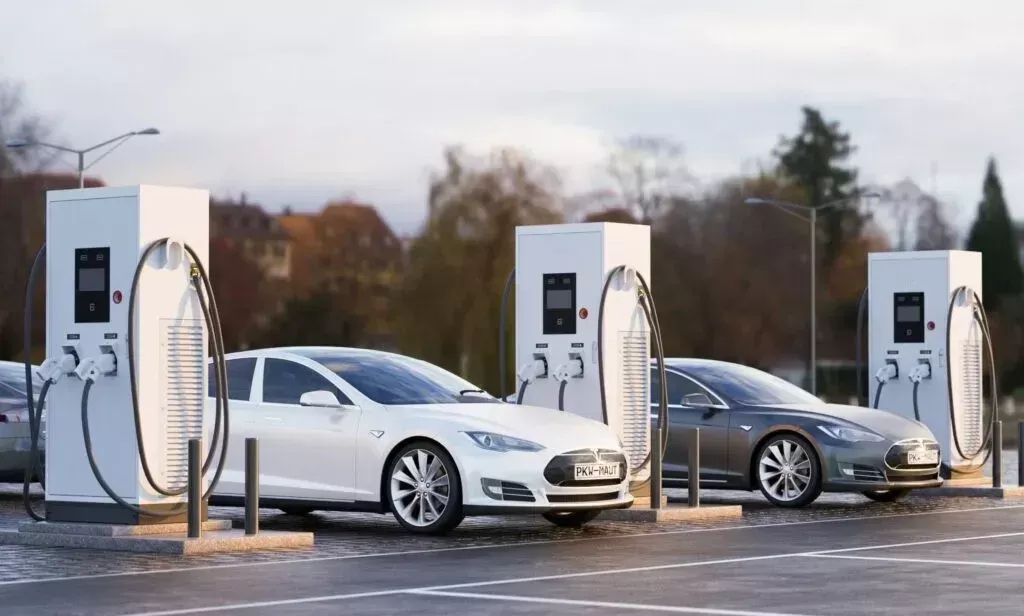Notifications

8 minutes, 38 seconds
-11 Views 0 Comments 0 Likes 0 Reviews

The Road Ahead for EV Charging Infrastructure
The transition to electric vehicles (EVs) is far more than a passing trend—it’s a powerful movement reshaping transportation, sustainability, and how we power our everyday lives. For businesses and property owners, installing commercial EV charging stations is a strategic opportunity that goes well beyond simply embracing new technology. It signals a forward-thinking, environmentally responsible, and customer-centric approach in a market that increasingly demands all three.
The benefits of adding China EV chargers to your commercial property are significant. From driving increased foot traffic and encouraging longer customer visits to boosting tenant retention and enhancing brand reputation, the advantages are clear. Some businesses have even reported indirect revenue increases in the thousands annually just by providing EV charging services.
Yet, one critical factor often overlooked is timing. The sooner you invest in EV charging infrastructure, the more benefits you unlock—and the greater your potential return on investment. Early action allows you to stay ahead of competitors, access valuable funding, and future-proof your operations as EV adoption accelerates globally.
This guide will explore why now is the right time for commercial EV charging, the various payment and operational models available, how incentives can reduce upfront costs, and why delaying could mean missing out on significant opportunities.
Many commercial property owners hesitate to install EV charging stations, citing current low demand as a major reason. This hesitation is understandable—EVs still represent a relatively small slice of vehicles on the road in many areas. The question often arises: “Why invest if only a few drivers will benefit?”
However, this short-term perspective misses the broader picture. Global EV sales are soaring, fueled by government mandates, automaker commitments, and growing consumer interest. Many cities and countries have set clear timelines to phase out gasoline and diesel vehicles, meaning EV adoption will accelerate rapidly.
By investing in charging infrastructure today, you’re not just meeting current needs—you’re preparing for a future where EV drivers will be the norm. This proactive stance signals to customers, tenants, and employees that you’re ahead of the curve, giving your property a decisive competitive advantage.
There are two compelling reasons to act now:
Capture Customer Loyalty Early: When EV drivers know they can reliably charge at your location—whether a shopping center, office park, hotel, or residential complex—they’re more likely to choose your business over competitors lacking this amenity.
Benefit from Financial Incentives: Federal, state, and local programs offer tax credits, grants, utility rebates, and low-interest loans to ease the cost of installation. These incentives are often first-come, first-served and may dwindle as demand rises, so early adopters stand to save significantly.
Delaying not only risks losing funding but may also increase your costs as installation prices rise with demand.
After deciding to install EV chargers, the next step is selecting how to bill drivers. Several models exist, each fitting different business needs:
Flat-Fee Charging: A simple, predictable rate regardless of usage. Ideal for locations where customers stay briefly (e.g., cafes, gyms), offering convenience and straightforward revenue forecasting.
Metered Billing: Charges based on actual energy consumed, time spent charging, or total parking duration. This approach ensures fair pricing and cost recovery, especially where electricity rates vary. Time or parking-based billing can encourage turnover and discourage extended occupancy after charging completes.
Retail locations often prefer metered billing to accommodate varied customer visits, while residential or office properties may explore subscription or bundled payment plans for recurring users.
EV charging generates more than just direct income. Studies show drivers linger longer at businesses with charging stations, boosting sales at retail outlets, restaurants, and entertainment venues.
For example, grocery stores might see customers making larger weekly purchases while waiting for their vehicle to charge. Shopping malls benefit from increased foot traffic as drivers spend extra time browsing.
Additionally, EV chargers help attract and retain tenants, particularly younger, environmentally conscious renters who consider sustainability amenities essential.
Consumers increasingly evaluate businesses based on their environmental responsibility. Installing EV chargers visibly demonstrates your commitment to reducing carbon emissions and supporting clean transportation.
For companies with Environmental, Social, and Governance (ESG) goals, EV charging stations offer measurable progress toward sustainability targets. This commitment can enhance reputation, attract investors, and win contracts.
To maximize both sustainability and cost savings, consider integrating EV chargers with renewable energy sources such as rooftop solar panels. This reduces energy expenses and positions your business as a leader in clean technology.
Some businesses complement renewables with battery storage systems to manage peak demand efficiently and even sell surplus energy back to the grid, further reducing dependence on utility power.
While basic Level 2 chargers provide a solid foundation, many businesses are opting for smart chargers with advanced capabilities like dynamic load management, remote monitoring, and integrated payment processing.
Smart technology optimizes energy use, prevents overloads, and enables participation in demand response programs, which offer financial rewards for reducing consumption during peak times.
Future-proofing your investment by installing infrastructure to support additional chargers later can save considerable costs and complexity as demand grows.
Though initial costs, grid capacity, and permitting may seem daunting, partnering with experienced installers and trusted manufacturers makes the process smoother. Turnkey providers can help navigate local regulations, utility requirements, and funding applications to keep your project on track.
As the EV market expands rapidly, the question for property owners and businesses isn’t if, but when to install EV charging.
The answer is clear: act now. Secure valuable incentives, build customer loyalty, enhance your property’s appeal, and position yourself as a leader in sustainability and innovation.
Waiting risks higher costs, increased competition, and lost opportunities in a market that’s accelerating without pause.
Take the leap today—future-proof your business, delight your customers, and drive the future of clean, connected transportation.Know more about Google SEO Directory
China EV Chargers EV Charger Manufacturer EV Charging Solutions

